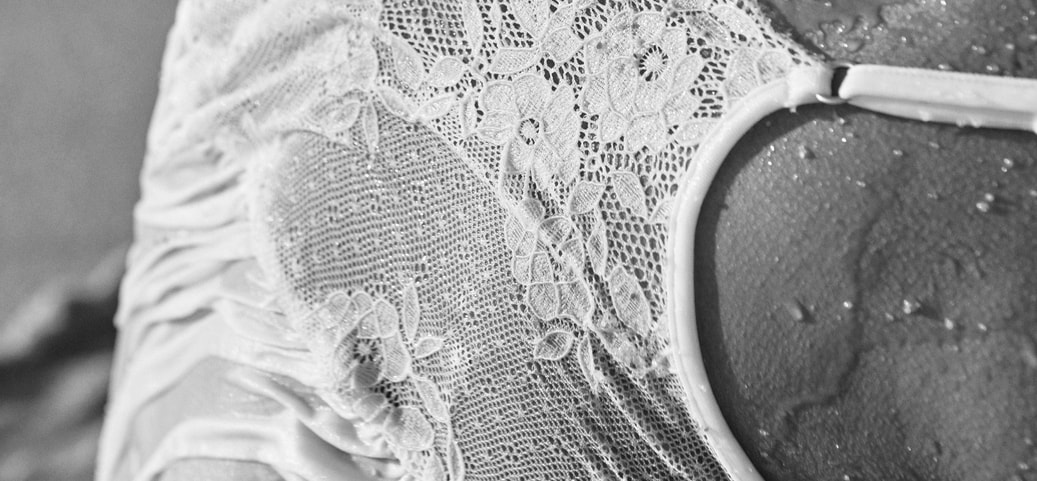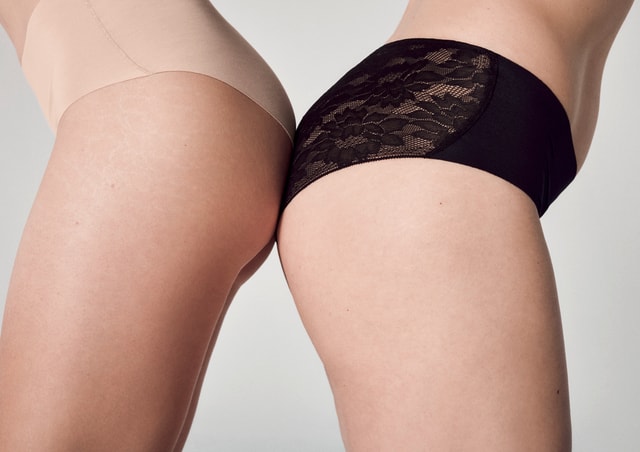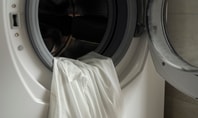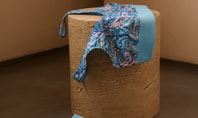Washing underwear: tips for germ-free underpants and bras
When we talk about doing the laundry, people often point out that clothes should be washed at low temperatures to protect the environment and save money. But what about our underpants, socks and bras? Do these clothing items really get hygienically clean at temperatures of 30 or 40 degrees? Allow us at CALIDA to explain what you should consider when washing underwear, which temperatures and detergents are suitable for your underwear and how you can also get delicate underwear such as bras with lace, briefs and undershirts made of silk germ-free.
by CALIDA
May 14, 2025•4 min reading time

Tips and tricks for gentle washing for long-lasting freshness and comfort.
Table of Contents
Washing briefs and socks: the right setting for dirty underwear
Socks and underwear made of cotton are usually very easy to care for and can withstand high temperatures of 60 or even 90 degrees when washing and drying. If you want to save your bank balance and the environment, however, these temperatures usually aren’t necessary; for your average dirty underwear, a 30 or 40-degree wash cycle is perfectly sufficient for declaring war on germs and bacteria.
If your laundry is heavily soiled, for example due to blood stains or if you’ve been ill, you should instead wash your underwear at 60 degrees. This also applies to families or house shares where all underwear is washed together. Short cycles are also particularly unsuitable for underwear, since the number of rinse cycles is particularly important for maximising the cleaning power of the machine wash.
Colour and heavy-duty detergents, liquid or powder: which detergent should be used for underwear?
In addition to the right washing programme, the choice of detergent is also relevant for ensuring your underwear is hygienically clean. Just like with other clothes, you should first sort your briefs, socks, bras, etc. by colour or lightness by separating them into coloured and white items.
While heavy-duty detergents are more suitable for light to white underwear due to their bleaching ingredients, you should avoid using bleach for black and coloured underwear to retain colour vibrancy. Colour detergents are suitable for dark underwear, and you can combine them with a suitable hygienic rinse, depending on the degree of soiling, to further optimise the cleaning power.
For white underwear in particular, we also recommend using heavy-duty detergents in powder form. These are not only more sustainable but also offer better cleaning power. You can also use liquid detergent for lightly soiled dark and coloured underwear. The advantage of this is that it won’t leave any white residue on the coloured laundry.

Gently wash bras and delicate underwear to protect materials, embroidery and cups
While cotton briefs, boxer shorts and socks are quite resistant to high washing temperatures and bleaching detergents, it’s a little different when it comes to delicate underwear and bras. Bridal underwear in particular, and other underwear made of delicate materials such as silk should only be washed by hand at low temperatures of no more than 30 degrees.
If gentle mild detergent does not have enough cleaning power to remove germs from dirty silk underwear, we recommend pretreating the laundry using a home remedy. Simply soak your silk underpants and undershirts in a mixture of equal parts water and white vinegar for one to two hours. Then rinse the underwear with lukewarm water and continue hand washing as usual.
You can also wash bras by hand very easily, especially if they have appliqués like lace, stones or sequins. If your bras are made of robust textiles, you can usually wash them at 30 degrees in the washing machine and use either colour or heavy-duty detergent, depending on the colour. To prevent the underwires from bending in the washing machine or the bras from snagging on and destroying other clothing, you should do them up and place them in a laundry bag.
Tumble dry or air dry underwear?
Just as with the choice of washing cycle and detergent, the compatibility of your underwear with the dryer depends primarily on the materials. Bras with moulded cups or underwired bras should generally not be tumble dried as they may lose their shape. The same goes for delicate underwear made of silk or polyester; a look at the laundry label provides information about which type of drying is suitable for your underwear.
While cotton laundry can generally be tumble dried at low temperatures, you should still question the need for it as, especially in summer, small items of laundry air dry in no time at all, so you don’t have to use any additional electricity. You can also dry white underwear in the sun to fade the appearance of stains and boost their brightness.
Discover more interesting blog posts:


